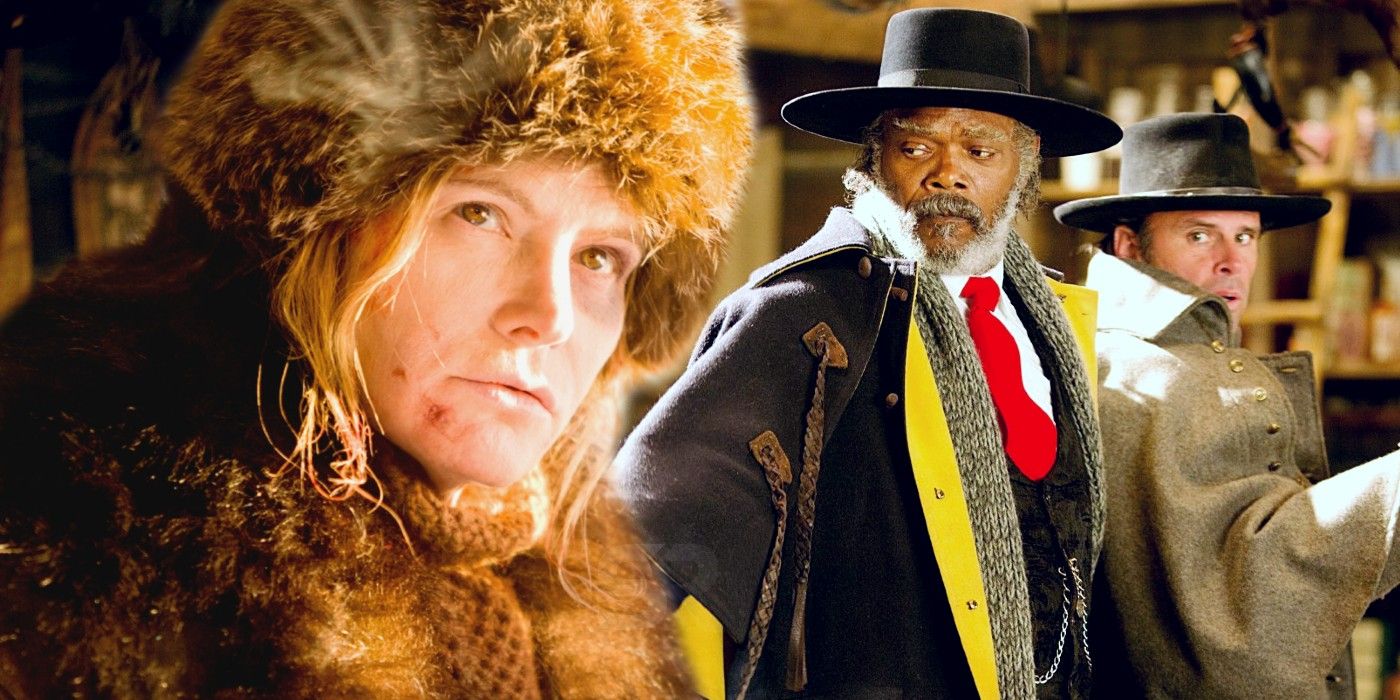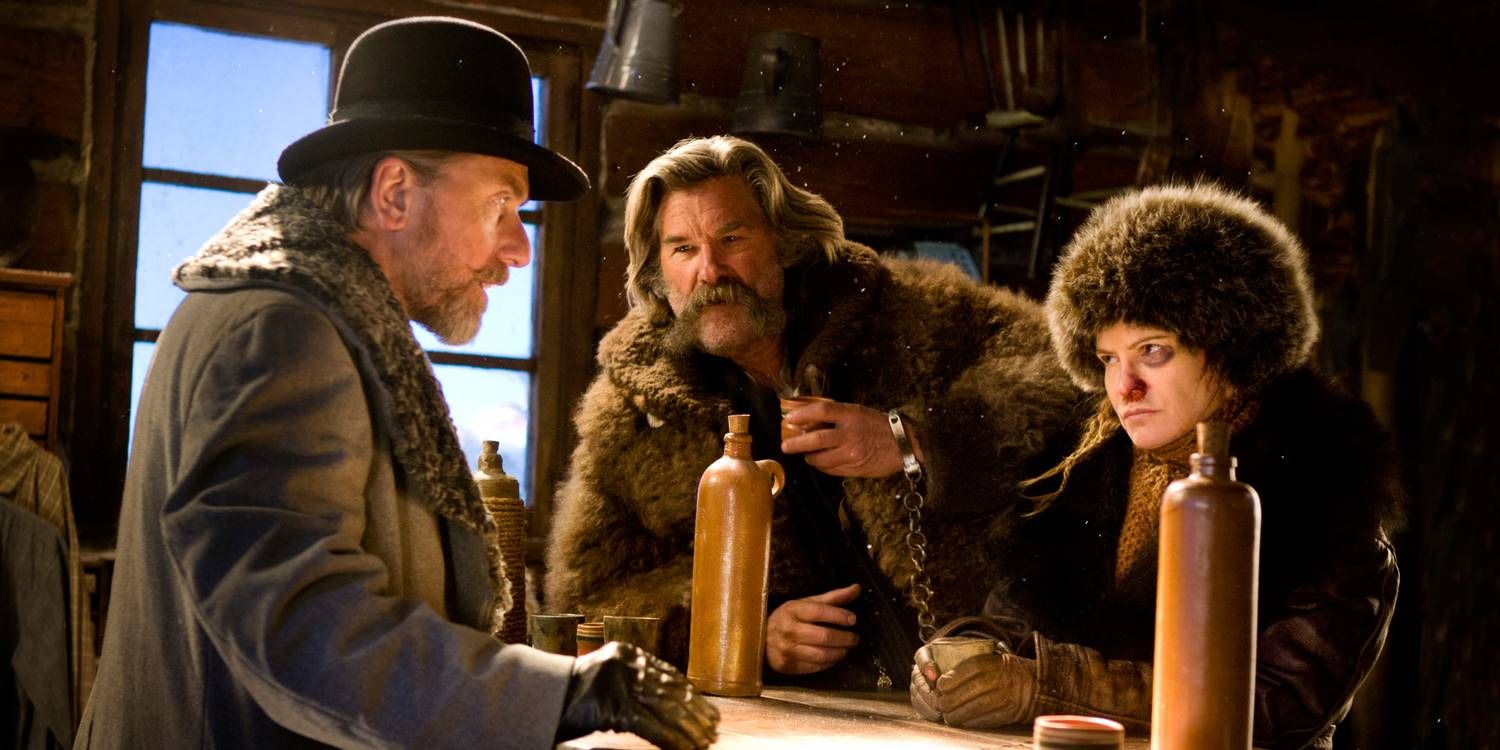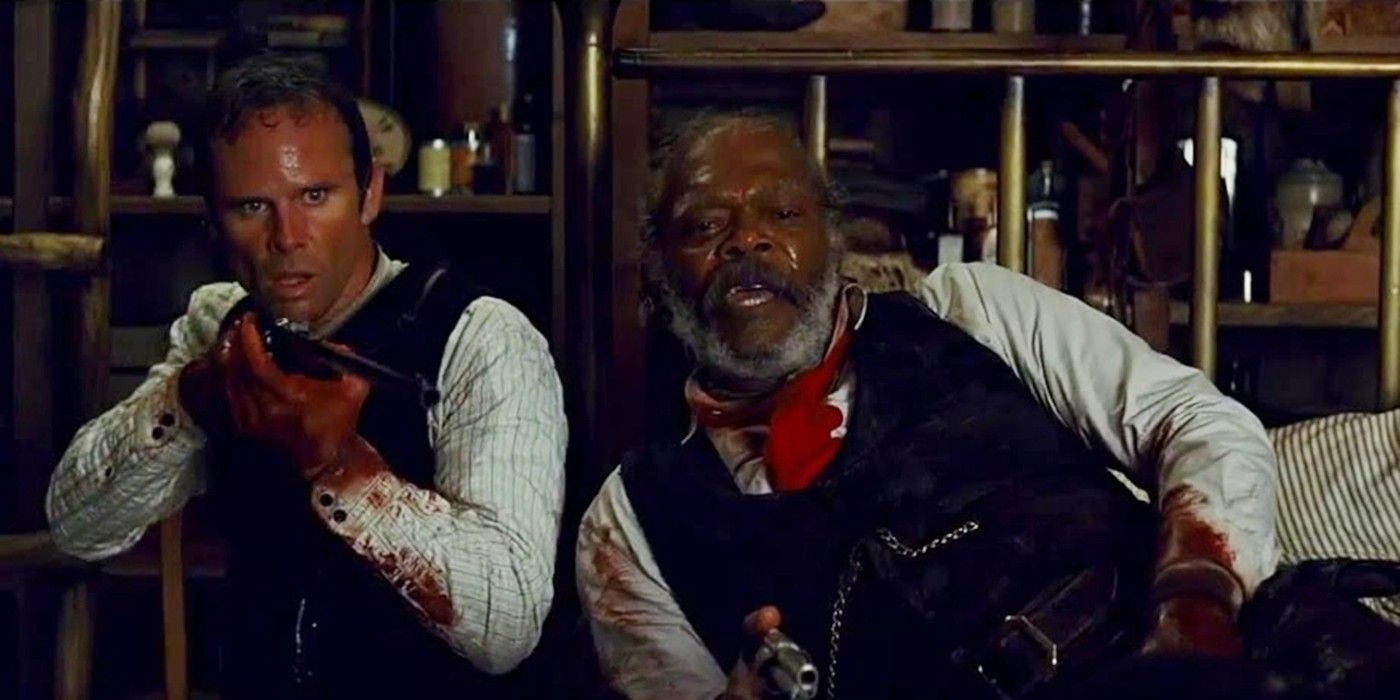
The Hateful Eight has an ending full of blood and betrayal, as expected from any Quentin Tarantino movie, but this wasn’t the original ending – here’s why he changed it. Tarantino has explored different genres throughout his career; though he’s best known for his crime movies like Reservoir Dogs and Pulp Fiction, he's also visited genres like martial arts (with both Kill Bill films) and black comedy (Once Upon a Time in Hollywood). In addition, he's shared his version of westerns with Django Unchained and The Hateful Eight, with the latter going through some problems and creative changes even before it began shooting.
Set in 1870, Tarantino's The Hateful Eight follows eight strangers, all with different (and secret) motivations, who end up in a stagecoach lodge after seeking refuge from a blizzard. These characters are Major Marquis Warren (Samuel L. Jackson), John “The Hangman” Ruth (Kurt Russell), Daisy Domergue (Jennifer Jason Leigh), Chris Mannix (Walton Goggins), Marco the Mexican (Demián Bichir), English Pete Hicox (Tim Roth), Grouch Douglass (Michael Madsen), and Sanford “Sandy” Smithers (Bruce Dern). All of the Hateful Eight characters have strong personalities and different plans that prompted major conflict between them - resulting in a real blood fest inside the stagecoach lodge as the Tarantino film's ending drew nearer and nearer.
In the third act of the movie, it’s revealed that Hicox (who was posing as a man named Oswaldo Mobray), Douglass (who introduced himself as Joe Gage), and Marco (who went by Señor Bob) were Daisy’s accomplices, who arrived at the lodge hours earlier with Daisy’s brother, Jody (whose Hateful Eight character was played by Channing Tatum). They did this to set everything up so they could rescue Daisy once she got there with Ruth. Douglass poisoned the coffee, killing Ruth and O.B. (James Parks), with Warren killing Marco and then being shot by Jody from the basement, while Mannix shoots Mobray. Gage is later killed by Mannix and Warren, and after failing to make a deal with Mannix, Daisy is hung from the rafters in honor of Ruth, and so the severely wounded Mannix and Warren are left to die. Of course, it's now known that Tarantino's original script for The Hateful Eight had a different ending - leaving many fans to wonder both what the finale might've looked like and why he changed it.

The Hateful Eight almost didn’t happen, as the full script was leaked online in January 2014. Tarantino decided not to move forward and considered publishing it as a novel instead. He eventually directed a live reading of the leaked script a few months later and wrote a new one that became the movie everyone now knows. The original ending of this Quentin Tarantino western saw Warren shot multiple times by Jody from underneath the floorboards until he fell to the floor, immobilized. Daisy, now free, finished him off by shooting him three times between the eyes. Ultimately, Mannix was the only character left alive (but wounded), instead of him and Warren sharing their final moments together in The Hateful Eight as Daisy hung from the rafters.

The original ending was much more violent and bloody - with every character, including Daisy, getting to kill someone. However, the final product was much better. By having each kill happen at its own time instead of in a big shootout, Tarantino built more tension between the Hateful Eight characters and allowed Daisy to explain a bit more about her gang and try to manipulate Mannix into killing Warren. In addition, there's another layer to why the changes to the original ending of this Quentin Tarantino movie were so beneficial. As IndieWire aptly pointed out in a 2016 article, "The original version doesn’t seem to really allow for underlying social and racial political themes to really play out, the way they do with Mannix and Warren working together through much of the third act. Tarantino’s changes are arguably for the better, rather than your standard carnage followed by one-man-left-standing setup."
Despite all of their violence and gore, Tarantino movies are far more than senseless violence alone. Characters and plots in his films are thoughtfully crafted, and relevant themes are embedded and repeatedly touched on. As previously mentioned, there's more meaning, complexity, and overall value to characters being killed off one by one than in the original script. And, not only that, but the changed, final version of The Hateful Eight's ending turns a sort of "classic" western film model on its head and subverts certain historical elements in a manner that hits viewers square in the face. With the product fans now and love in mind, it's easy to see why some of Quentin Tarantino's movie-writing and directing choices were changed before The Hateful Eight's release.
Comments
Post a Comment